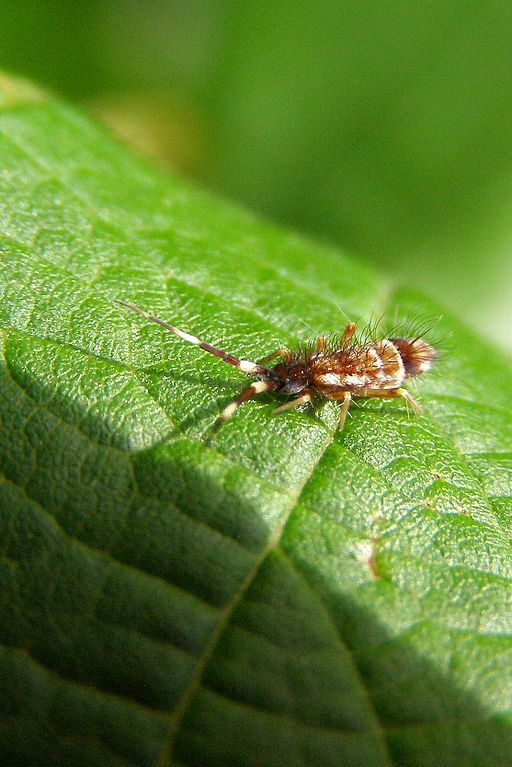SERVICE REQUEST?
Fill out the form below.
Find our nearest location
Your Local Office

Springtail
Attribution: Manfred Kunz, [CC-BY-SA-3.0], via Wikimedia Commons
Size:
Tiny insects, most being about 1/16-inch in length
Color:
Gray to black
Behavior:
These tiny insects derive their name from their tremendous leaps when disturbed. The jumping ability comes from an appendage – called a furcula – extending from the tip of the abdomen and folds back underneath the body. When threatened, the furcula is released hitting the ground, thus propelling the insect backwards up to several inches. These insects do no damage but their presence in large numbers – and the fact that they jump – can be upsetting to many homeowners who often mistake them for fleas. In fact, a few species of springtails are cold tolerant and may appear on top of the snow on warm sunny days, thus giving them the nickname “snowfleas.” Springtails, however, do not bite and are harmless. They can develop huge populations and can invade buildings by the thousands. Often such infestations are noticed in basements and garages and in bathrooms or the kitchen. It is not uncommon for a homeowner to complain about the huge numbers of springtails spilling over onto the patio from the lawn or mulched flowerbeds.
Springtails appear just about everywhere in nature except the most extreme temperatures like the coldest regions of the world and desert climates. They live in moist conditions outside (e.g., lawns, landscape beds) where they feed on molds and organic debris. Rustle through a handful of moist leaf litter, and you most likely will see a few. These insects occasionally invade homes and are particularly prominent in basements, bathrooms and kitchens.
When large numbers of springtails are present, they can be difficult to eliminate. In such cases, pest professionals will apply treatments as necessary, and more than one application may be necessary. Treatments by themselves, however, are a short term solution. Elimination or correction of an excess moisture condition will provide long-term relief. Consider the following steps to improve excessive moisture conditions:
- Improve drainage away from the home’s foundation.
- Ensure the irrigation system is not soaking the foundation or isn’t overwatering the lawn or landscaping.
- Install a dehumidifier in the basement or other area that is overly humid.
- Improve ventilation and drainage in a crawl space.
Family Name:
Order Collembola
Read What Our Clients
Are Saying
My Terminix tech Scott is the best! He is professional, courteous and absolutely thorough about his job. Thank you for sending such a blessed tech to my house. Hamlet, NC
This letter is to say how pleased we are here at Morreene West Apartments with your services. We are very pleased with the technician, Christopher. He does a great job. Durham, NC
Terminix has consistently offered our apartment complex reliable, competent service. We are completely satisfied with their knowledgeable representative who is always punctual and does a superior job for us every time. Chapel Hill, NC
I would like to take the time to thank you for giving us such great service here at Carver Pond Apartments. Your Pest Technician Christopher Mitchell has provided us with excellent service over the last few months. Christopher is such a great help to us in providing helpful information so that we can better serve our residents here at Carver Pond. Durham, NC
SERVICE REQUEST?
Fill out the form below.